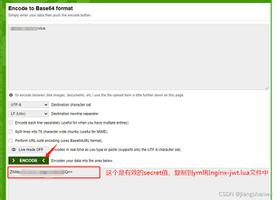ShutdownaSpringBootApplication

The emphasize of this write-up is the destruction phase of the lifecycle. More specifically, we"ll have a look at different ways to shut down a Spring Boot Application.
To learn more about how to set up a project using Spring Boot, check out the Spring Boot Starter article, or go over the Spring Boot Configuration.
2. Shutdown Endpoint
By default, all the endpoints are enabled in Spring Boot Application except /shutdown; this is, naturally, part of the Actuator endpoints.
Here"s the Maven dependency to set up these up:
1
2
3
4
<
dependency
>
<
groupId
>org.springframework.boot</
groupId
>
<
artifactId
>spring-boot-starter-actuator</
artifactId
>
</
dependency
>
And, if we want to also set up security support, we need:
1
2
3
4
<
dependency
>
<
groupId
>org.springframework.boot</
groupId
>
<
artifactId
>spring-boot-starter-security</
artifactId
>
</
dependency
>
Lastly, we enable the shutdown endpoint in application.properties file:
1
2
3
management.endpoints.web.exposure.include=*
management.endpoint.shutdown.enabled=true
endpoints.shutdown.enabled=true
Note that we also have to expose any actuator endpoints that we want to use. In the example above, we"ve exposed all the actuator endpoints which will include the /shutdown endpoint.
To shut down the Spring Boot application, we simply call a POST method like this:
1
curl -X POST localhost:port/actuator/shutdown
In this call, the port represents the actuator port.
3. Close Application Context
We can also call the close() method directly using the application context.
Let"s start with an example of creating a context and closing it:
1
2
3
4
5
ConfigurableApplicationContext ctx =
new
SpringApplicationBuilder(Application.
class
).web(WebApplicationType.NONE).run();
System.out.println(
"Spring Boot application started"
);
ctx.getBean(TerminateBean.
class
);
ctx.close();
This destroys all the beans, releases the locks, then closes the bean factory. To verify the application shutdown, we use the Spring"s standard lifecycle callback with @PreDestroy annotation:
1
2
3
4
5
6
7
public
class
TerminateBean {
@PreDestroy
public
void
onDestroy()
throws
Exception {
System.out.println(
"Spring Container is destroyed!"
);
}
}
We also have to add a bean of this type:
1
2
3
4
5
6
7
8
@Configuration
public
class
ShutdownConfig {
@Bean
public
TerminateBean getTerminateBean() {
return
new
TerminateBean();
}
}
Here"s the output after running this example:
1
2
3
4
5
Spring Boot application started
Closing AnnotationConfigApplicationContext@39b43d60
DefaultLifecycleProcessor - Stopping beans in phase 0
Unregistering JMX-exposed beans on shutdown
Spring Container is destroyed!
The important thing here to keep in mind: while closing the application context, the parent context isn"t affected due to separate lifecycles.
3.1. Close the Current Application Context
In the example above, we created a child application context, then used the close() method to destroy it.
If we want to close the current context, one solution is to simply call the actuator /shutdown endpoint.
However, we can also create our own custom endpoint:
1
2
3
4
5
6
7
8
9
10
11
12
13
14
15
16
@RestController
public
class
ShutdownController
implements
ApplicationContextAware {
private
ApplicationContext context;
@PostMapping
(
"/shutdownContext"
)
public
void
shutdownContext() {
((ConfigurableApplicationContext) context).close();
}
@Override
public
void
setApplicationContext(ApplicationContext ctx)
throws
BeansException {
this
.context = ctx;
}
}
Here, we"ve added a controller that implements the ApplicationContextAware interface and overrides the setter method to obtain the current application context. Then, in a mapping method, we"re simply calling the close() method.
We can then call our new endpoint to shut down the current context:
1
curl -X POST localhost:port
/shutdownContext
Of course, if you add an endpoint like this in a real-life application, you"ll want to secure it as well.
4. Exit SpringApplication
SpringApplication registers a shutdown hook with the JVM to make sure the application exits appropriately.
Beans may implement the ExitCodeGenerator interface to return a specific error code:
1
2
3
4
5
6
7
8
9
10
11
12
ConfigurableApplicationContext ctx =
new
SpringApplicationBuilder(Application.
class
)
.web(WebApplicationType.NONE).run();
int
exitCode = SpringApplication.exit(ctx,
new
ExitCodeGenerator() {
@Override
public
int
getExitCode() {
// return the error code
return
0
;
}
});
System.exit(exitCode);
The same code with the application of Java 8 lambdas:
1
SpringApplication.exit(ctx, () ->
0
);
After calling the System.exit(exitCode), the program terminates with a 0 return code:
1
Process finished with exit code 0
5. Kill the App Process
Finally, we can also shut down a Spring Boot Application from outside the application by using a bash script. Our first step for this option is to have the application context write it"s PID into a file:
1
2
3
4
SpringApplicationBuilder app =
new
SpringApplicationBuilder(Application.
class
)
.web(WebApplicationType.NONE);
app.build().addListeners(
new
ApplicationPidFileWriter(
"./bin/shutdown.pid"
));
app.run();
Next, create a shutdown.bat file with the following content:
1
kill $(cat ./bin/shutdown.pid)
The execution of shutdown.bat extracts the Process ID from the shutdown.pid file and uses the kill command to terminate the Boot application.
6. Conclusion
In this quick write-up, we"ve covered few simple methods that can be used to shut down a running Spring Boot Application.
While it"s up to the developer to choose an appropriate a method; all of these methods should be used by design and on purpose.
For example, .exit() is preferred when we need to pass an error code to another environment, say JVM for further actions. Using ApplicationPID gives more flexibility, as we can also start or restart the application with the use of bash script.
Finally, /shutdown is here to make it possible to terminate the applications externally via HTTP. For all the other cases .close() will work perfectly.
As usual, the complete code for this article is available over on the GitHub project.
以上是 ShutdownaSpringBootApplication 的全部内容, 来源链接: utcz.com/z/513034.html









